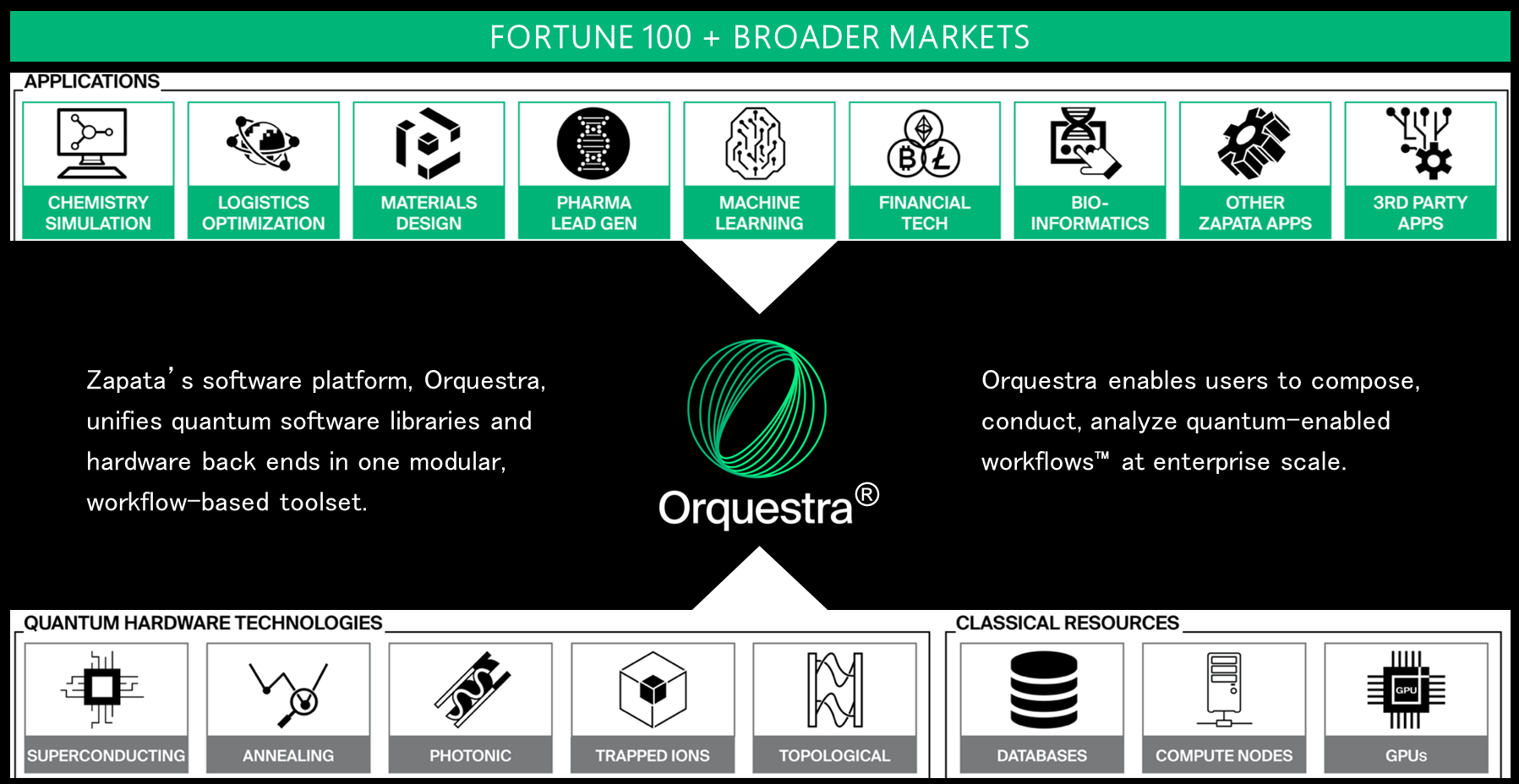ITOCHU Announces Investment in Zapata Computing, Developer of Software for Quantum Computers
November 19, 2020
ITOCHU Corporation (headquartered in Minato-ku, Tokyo; Yoshihisa Suzuki, President & COO; hereinafter "ITOCHU") announces today that it has invested in Zapata Computing, Inc. (headquartered in Boston, USA; CEO & Co-Founder: Christopher J. Savoie; hereinafter “Zapata”), a company that develops software for quantum computers*1. Going forward, ITOCHU will support the rollout of the Zapata’s products and services in Japan.
In recent years, quantum computers – which leverage quantum mechanics to solve computational problems – are gaining attention in light of the rapid increase in data demand accompanying the Fourth Industrial Revolution. Classical computers*2 are also reaching the limits for which it is possible to further improve their performance. In the quantum computing hardware field, competition between major IT companies such as IBM, Google, and Honeywell is reaching superheated levels. However, since the quantum computers developed by these companies do not utilize the same formats or development languages, there is a growing demand for application development and other products and services in the software domain. Additionally, since the majority of operations using quantum computers are currently still compensated for by classical computers, there is a need for environments that enable hybrid operation of both types of computer.
Zapata is a Harvard University spin out which is leading the industry with the development of its Orquestra® software for quantum computers. By modularizing components of the quantum software ecosystem and integrations with quantum devices, the platform enables combined use of quantum computers that use different formats and languages alongside quantum-inspired and classical backends. Moreover, by controlling the order of operations and allocating resources between conventional classical computers and quantum computers, the software also allows the simulation of quantum algorithms in classical computing environments and enables efficient use of quantum computers and preparation for their full-scale introduction. Because of these advantages, Zapata’s software has already been introduced at leading companies in all manner of industries, primarily in the United States, including the petroleum, gas, pharmaceutical, finance and automotive industries.
Through its investment in Zapata, ITOCHU will utilize its Group network and know-how to support the rollout of the company’s products and services in Japan. Additionally, ITOCHU will work to develop new services and resolve issues faced by customers in the field of quantum computing in Japan through collaboration with its Group company ITOCHU Techno-Solutions Corporation (headquartered in Chiyoda-ku, Tokyo; President & CEO Ichiro Tsuge), which possesses strengths in the software domain, such as in the building and operation of large-scale systems including cloud systems.
ITOCHU has long been focused on the impact that quantum computing will have on society and the activities of business enterprises, and has closely observed investment and technology trends in quantum computing through its investments with powerful venture capital in countries such as the United States and Israel. Looking ahead, through its partnerships with promising startup companies in countries around the world, ITOCHU will aim to develop new services both in Japan and abroad, increase the earning power of its Group operating companies, and contribute to energizing the economy overall.
- *1Quantum computer: A computer that applies the principles of quantum mechanics to the processing of information. Rather than using conventional (or classical) binary bits, which can be set only as 0 or 1, information in quantum computers is processed using quantum bits (qubits), the state of which can be a superposition of both 0 and 1.
- *2Classical computer: A general term for computers that perform calculations using logical circuits, with their basis in classical physics.
Schematic Drawing of Zapata’s Orquestra®
|
|

